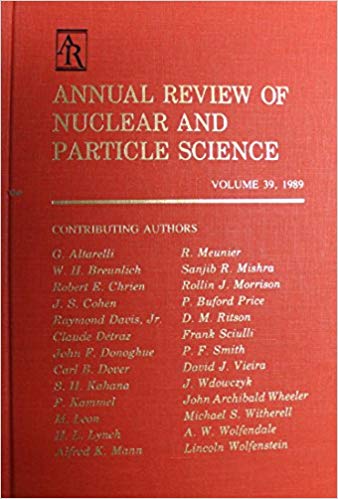地下实验室探索之星:挑战与解决方案
IF 9.1
2区 物理与天体物理
Q1 PHYSICS, NUCLEAR
Annual Review of Nuclear and Particle Science
Pub Date : 2022-07-08
DOI:10.1146/annurev-nucl-110221-103625
引用次数: 2
摘要
几千年来,人类一直被星空的奇迹所吸引。然而,对恒星如何形成、发光和死亡的正确科学理解是一项相对较新的成就,这是由于不同学科的相互作用以及重大的技术、理论和观测进步而实现的。我们现在知道,恒星是由核聚变反应维持的,是所有化学元素继续从原始氢和氦中锻造出来的熔炉。在陆地实验室研究这些反应带来了严峻的挑战,通常需要开发巧妙的仪器和检测技术。在这里,我们揭示了我们探索恒星内部运作的一些重大突破是如何来自最意想不到的地方:地下深处。在我们庆祝第一个核天体物理学地下实验室LUNA活动30周年之际,我们回顾了一些关键里程碑,并预测了LUNA和世界其他地下实验室未来取得进一步进展的机会。《核与粒子科学年度评论》第72卷预计最终在线出版日期为2022年9月。请参阅http://www.annualreviews.org/page/journal/pubdates用于修订估算。本文章由计算机程序翻译,如有差异,请以英文原文为准。
Exploring Stars in Underground Laboratories: Challenges and Solutions
For millennia, mankind has been fascinated by the marvel of the starry night sky. Yet, a proper scientific understanding of how stars form, shine, and die is a relatively recent achievement, made possible by the interplay of different disciplines as well as by significant technological, theoretical, and observational progress. We now know that stars are sustained by nuclear fusion reactions and are the furnaces where all chemical elements continue to be forged out of primordial hydrogen and helium. Studying these reactions in terrestrial laboratories presents serious challenges and often requires developing ingenious instrumentation and detection techniques. Here, we reveal how some of the major breakthroughs in our quest to unveil the inner workings of stars have come from the most unexpected of places: deep underground. As we celebrate 30 years of activity at the first underground laboratory for nuclear astrophysics, LUNA, we review some of the key milestones and anticipate future opportunities for further advances both at LUNA and at other underground laboratories worldwide. Expected final online publication date for the Annual Review of Nuclear and Particle Science, Volume 72 is September 2022. Please see http://www.annualreviews.org/page/journal/pubdates for revised estimates.
求助全文
通过发布文献求助,成功后即可免费获取论文全文。
去求助
来源期刊
CiteScore
21.50
自引率
0.80%
发文量
18
期刊介绍:
The Annual Review of Nuclear and Particle Science is a publication that has been available since 1952. It focuses on various aspects of nuclear and particle science, including both theoretical and experimental developments. The journal covers topics such as nuclear structure, heavy ion interactions, oscillations observed in solar and atmospheric neutrinos, the physics of heavy quarks, the impact of particle and nuclear physics on astroparticle physics, and recent advancements in accelerator design and instrumentation.
One significant recent change in the journal is the conversion of its current volume from gated to open access. This conversion was made possible through Annual Reviews' Subscribe to Open program. As a result, all articles published in the current volume are now freely available to the public under a CC BY license. This change allows for greater accessibility and dissemination of research in the field of nuclear and particle science.

 求助内容:
求助内容: 应助结果提醒方式:
应助结果提醒方式:


